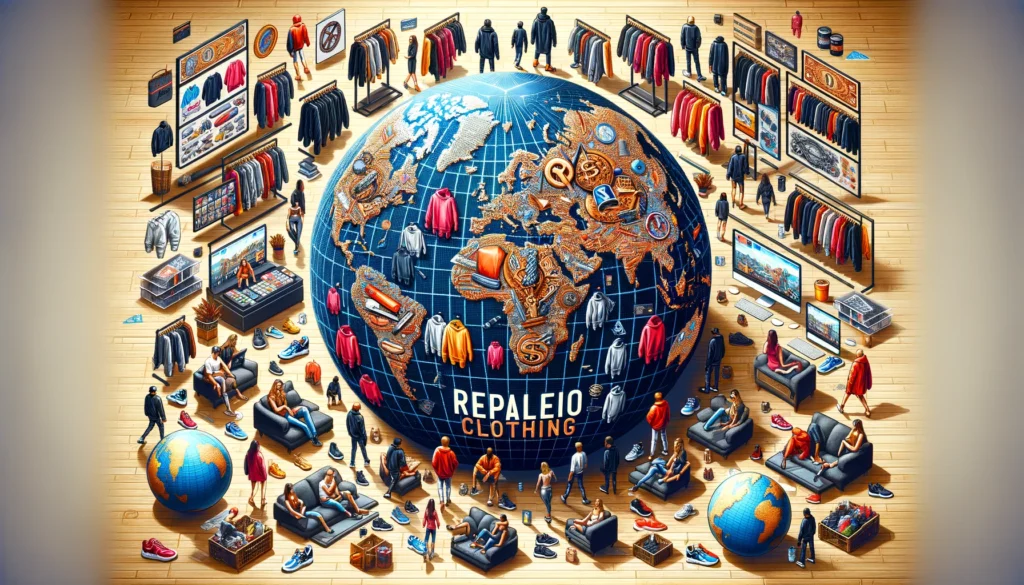In the vast landscape of fashion, replica designer clothing occupies a unique niche, offering styles that echo luxury brands at a fraction of the price. This market has expanded globally, reaching specific demographics, including children and infants, and flourishing in countries like Turkey and the UK. Let’s explore the nuances of these markets, uncovering the appeal and challenges of replica clothing.
The Appeal of Replica Designer Clothing
Replica clothing allows consumers to engage with fashion trends and luxury designs without the steep price tags. This appeal cuts across all ages, from adults seeking the latest in haute couture to parents wishing for trendy yet affordable options for their children.
Children and Infants: A Growing Demand
The market for children’s replica designer clothes has seen substantial growth. Parents are increasingly drawn to replicas that offer the look and feel of designer brands for their children’s everyday wear, special occasions, and photo shoots. However, the key here is balancing the desire for style with the need for age-appropriate, safe, and comfortable clothing.
Safety and Quality Considerations
When it comes to replicas for children and infants, safety and quality are paramount. It’s crucial for parents to scrutinize materials for potential allergens or harmful dyes and to ensure that small, detachable parts are securely attached to prevent choking hazards.
Specific Markets: Turkey and the UK

Turkey: A Hub of Manufacturing
Turkey is renowned for its textile industry, making it a pivotal player in the replica market. The country’s factories often produce garments that match closely with the quality of some designer brands, benefiting from skilled craftsmanship and access to quality materials. However, navigating the legal and ethical implications of replicas in Turkey requires awareness of the country’s intellectual property laws.
The UK: Consumer Trends and Legal Landscape
In the UK, the demand for replica designer clothing intertwines with strict regulations against counterfeit goods. British consumers have shown a keen interest in replicas that offer design fidelity without infringing on trademarks. The UK’s legal framework emphasizes consumer protection and intellectual property rights, setting a standard for how replicas are marketed and sold.
Navigating Legal and Ethical Considerations
Globally, the replica clothing market operates within a complex web of legal and ethical considerations. Consumers are advised to:
- Research: Understand the distinction between legally produced replicas and counterfeit goods.
- Ethical Choices: Consider the implications of purchasing replicas on designers’ rights and the broader fashion industry.
- Quality Over Quantity: Opt for higher-quality replicas that respect the original designs without misleading consumers.
To distinguish a high-quality replica from a counterfeit, focus on material quality, craftsmanship, and design accuracy. High-quality replicas use good materials and closely mimic the original design without falsely using the brand’s trademark. Counterfeits often use inferior materials and attempt to pass as the genuine article with misleading branding.
Yes, there are safe platforms for purchasing children’s replica clothing, but it requires diligence. Look for reputable online retailers or platforms that offer buyer protection, have transparent reviews, and provide detailed product descriptions. Always verify the seller’s reputation and the product’s safety features, especially for infants and young children.
International laws affect the purchase of replica designer clothing by regulating copyright and trademark infringements. Laws vary by country; some have strict regulations against selling and purchasing counterfeit goods, while others may allow replicas that don’t infringe on trademarks. It’s crucial to understand your country’s stance on replicas to ensure legal compliance.
Final Thoughts
The world of replica designer clothing is as diverse as it is controversial. From Turkey’s skilled manufacturers to the discerning consumers in the UK, the market reflects a global desire for accessible fashion. However, it also underscores the need for informed, ethical consumption practices to navigate this complex landscape successfully.